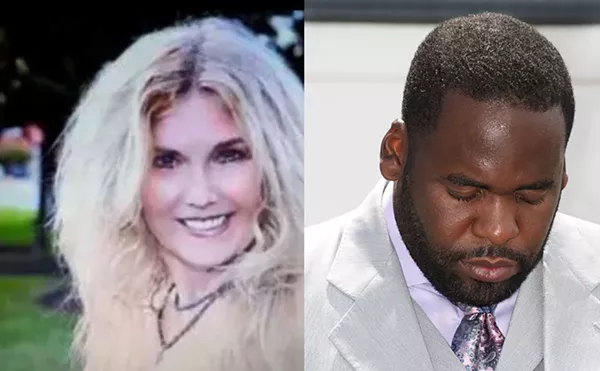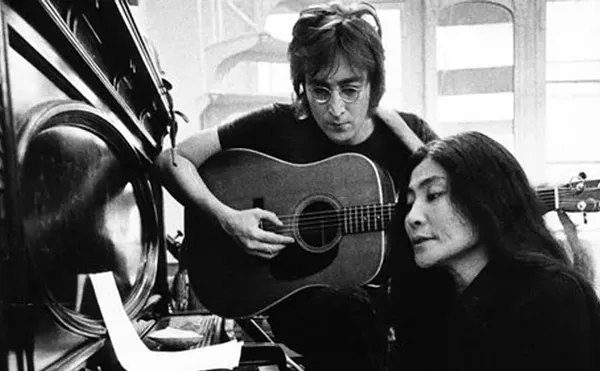
Audio By Carbonatix
[
{
"name": "GPT - Leaderboard - Inline - Content",
"component": "35519556",
"insertPoint": "5th",
"startingPoint": "3",
"requiredCountToDisplay": "3",
"maxInsertions": 100,
"adList": [
{
"adPreset": "LeaderboardInline"
}
]
}
]
Now that many American high schools have given up teaching courses in civics, it’s heartening (and a bit frightening) to see Hollywood step in to teach us the frailties and responsibilities of democracy.
Directing his second feature film, George Clooney delivers a smart, restrained and timely examination of how TV news, once upon a time, fearlessly spoke truth to power.
Good Night, and Good Luck is set in 1953, during the Communist witch hunts that recklessly destroyed careers and lives, and traces the five episodes of Edward R. Murrow’s television program, See It Now, which challenged Sen. Joseph McCarthy, the witch hunt’s grand inquisitor. At the time, the national press, afraid to be accused of treason, refused to examine or criticize the House Committee on Un-American Activities. When Air Force reservist Milo Radulovich, of Dexter, Mich., was drummed out of the service because of accusations against his family’s patriotism, Murrow and producer Fred Friendly decided enough was enough. Much to CBS’s discomfort, they challenged the government, which triggered a loss of sponsors, charges that Murrow was a fellow traveler and, eventually, an on-air rebuttal by McCarthy himself.
These televised confrontations resulted in some of the most profound and pertinent commentaries of Murrow’s career. Clooney avoids underlining statements like, “We must not confuse dissent with disloyalty,” and “We cannot defend freedom abroad by deserting it at home.” Instead, he lets the reporter’s statements casually remind us of their relevance today. Clooney addresses how our government can distort the truth and abuse its power, and how we answer that abuse, reminding us that it’s the duty and responsibility of the news media, in particular television, to question the actions of our leaders — not just garner ratings.
Working from a script he co-wrote with Grant Heslov, Clooney relies on archival footage of McCarthy and the hearings, and direct transcripts. As a result, the film is, indeed, a civics lesson, but an expertly told and entertaining one. By narrowing the focus to CBS’s smoke-filled newsrooms, hallways and elevators, the claustrophobic settings heighten Good Night’s climate of fear and intimidation. Personal insights about Murrow and his colleagues are, for the most part, avoided. When Clooney does stray from the main story, things start to unravel quickly.
Though the cast is uniformly good, David Strathairn commands with his uncanny portrayal of Murrow. He delivers a career-making performance that brilliantly captures Murrow’s dignity and self-doubt. Special notice should also be given to Frank Langella for his portrayal of conflicted network exec, William Paley. It’s a performance that earns his character empathy and criticism.
Robert Elswit’s sumptuous black-and-white cinematography gives the film a crisp, hard-edged realism, and Clooney mimics the style of television pioneers Sidney Lumet and John Frankenheimer, using harsh lighting, inventive camera angles and full-face close-ups to good effect.
The film, like Murrow himself, puts forth a cool, collected, almost inscrutable facade. But beneath its surface is seething disgust and anger with our current political state. The parallels to the complacency and spinelessness of today’s mainstream news media are unavoidable. Good Night, and Good Luck makes it clear how desperately we need principled, accurate, inquisitive and courageous reporters like Murrow today. —
Showing at the Maple Art Theatre (4135 W. Maple Rd., Bloomfield Hills; 248-263-2111).
Jeff Meyers writes about film for MetroTimes. Send comments to letters@metrotimes.com.





